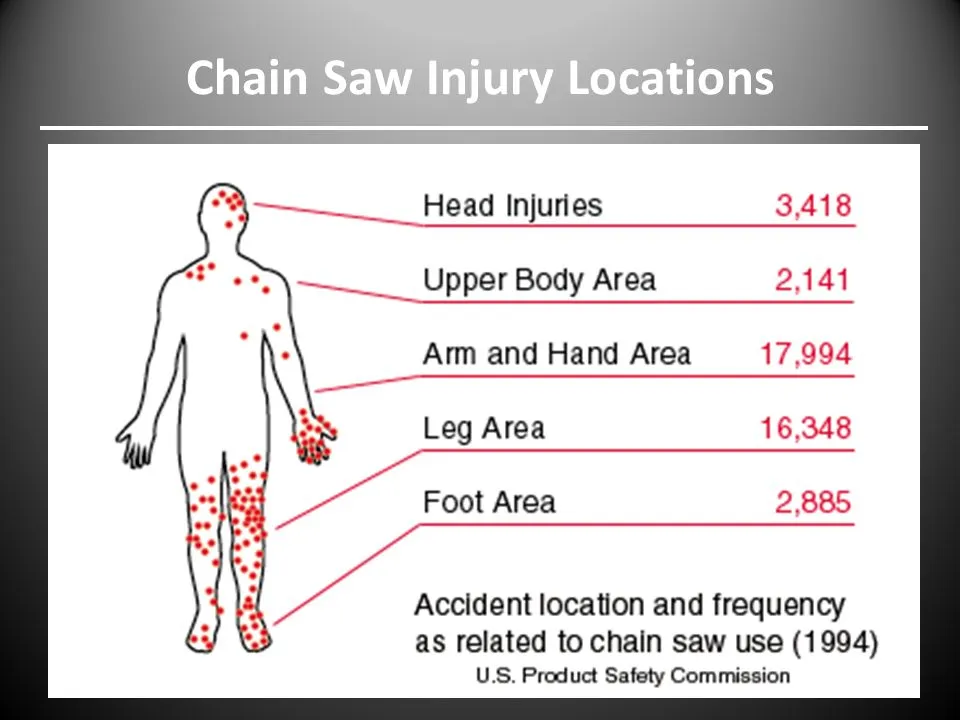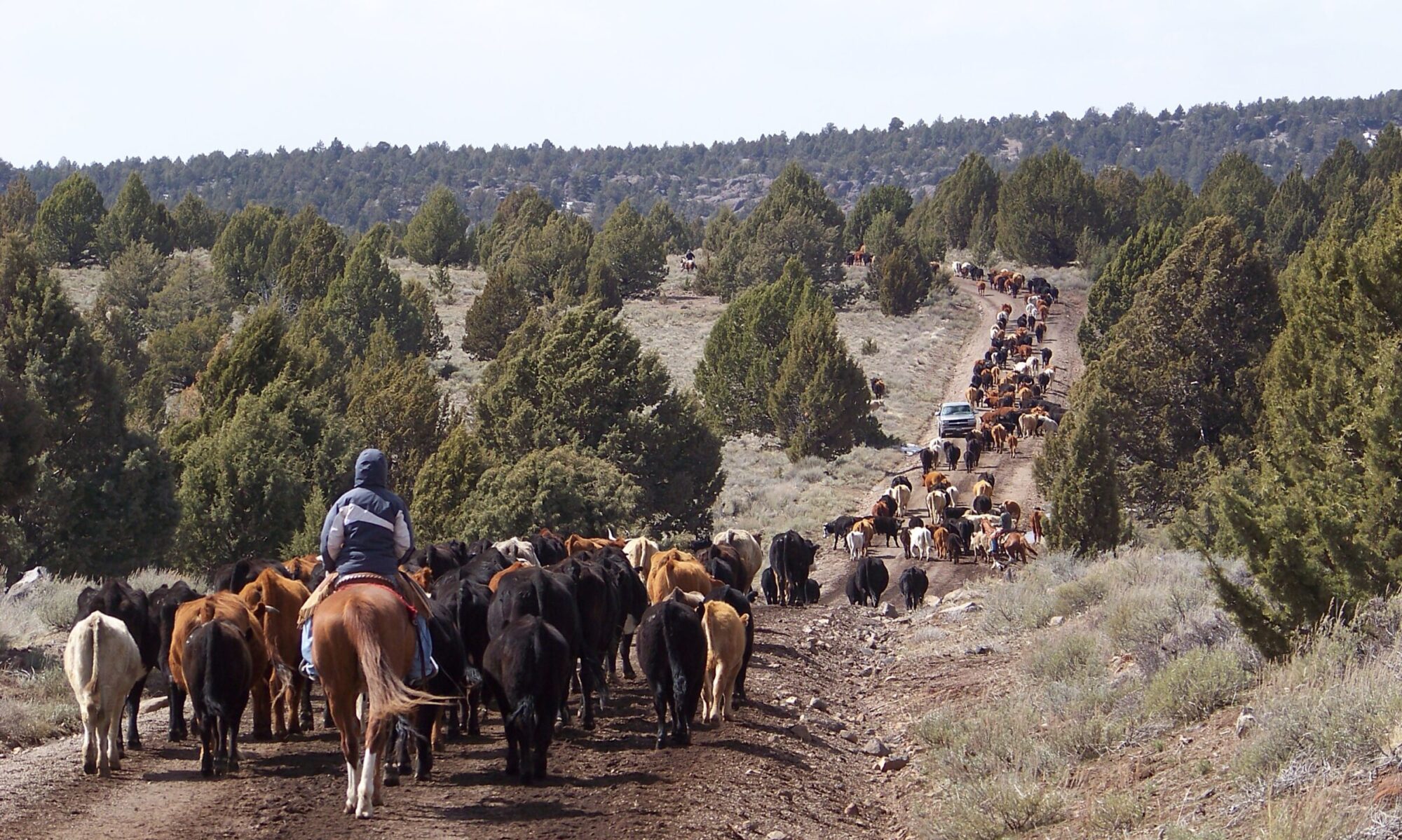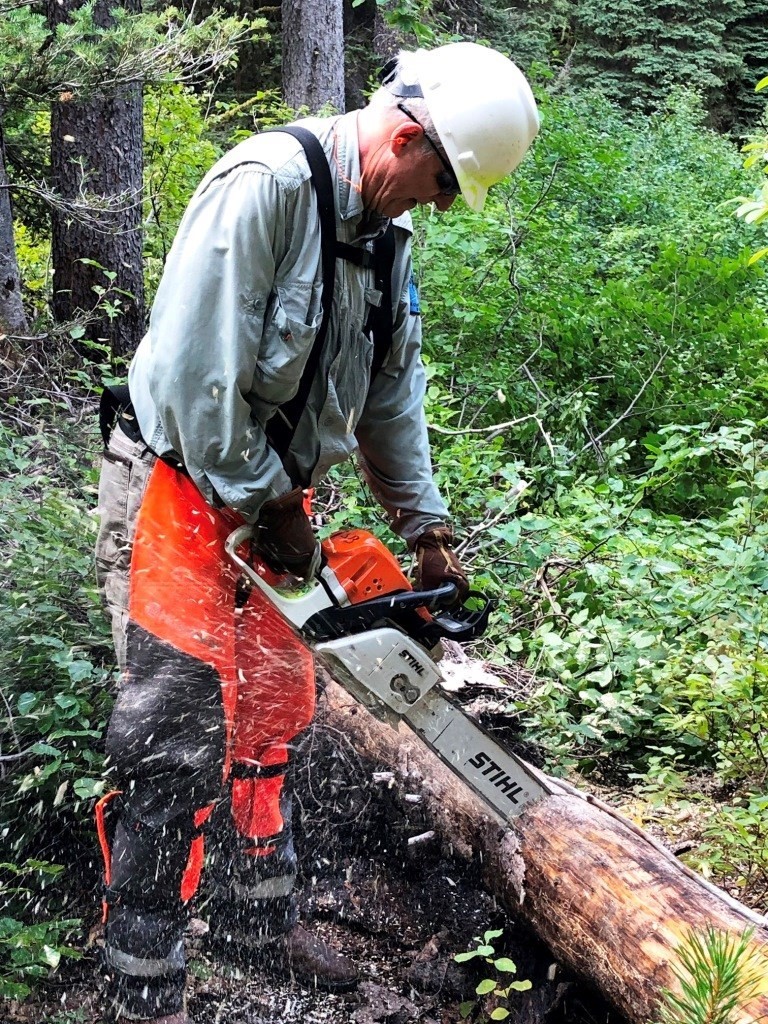How to find Sawyer Certification Training:
To find out when sawyer safety workshops are being held, contact one of the following Sawyer Trainers or a Ranger District (in your region): Region 1 — Todd Brown at Sawyer-coordinator1@bchi.org or (208) 451-3161 Region 4 — Rob Adams at Sawyer-coordinator2@bchi.org or (208) 781-0548
BCHI and USFS requires the use of a certified hard hat, safety glasses/goggles, ear protection, gloves, chainsaw chaps.
CHAINSAW PERSONAL PROTECTIVE EQUIPMENT
You can find everything the chainsaw operator needs for total protection – gloves, helmet, ear protectors, trousers and more. Nothing should be more important than preparing properly for chainsaw use, and getting the right clothes should never be ignored.
In the future, we will not include pictures of sawyers on any web page without the minimum required equipment.
To become a USFS certified Sawyer and to work on USFS projects, you need a valid sawyer certificate, a valid CPR certification and a valid First Aid certificate.
To get your First Aid and CPR certifications in the Boise area, you will need to take some classes from the Red Cross or the American Safety & Health Institute (ASHI). These are normally given on a weekday evening.
For Sawyer certification classes – Contact: Rob Adams Education@sbbchidaho.org 208-781-0548
This is normally a 2 day class given on a Sat. and Sun. One day of classroom and one day in the field. Video of our field day is here! More pictures here!
USDA & FS Chain Saw and Crosscut Training Course (an old document but a lot of good info is contained in it)
Instruction Videos
- The Crosscut Sawyer Video – 40 minute video – This is a companion to the Forest Service “Chain Saw and Crosscut Saw Training Course.”
- Handtools For Trail Work – Part 1 – USDA Forest Service 1999 – 26 minute video on – Crosscuts – Loppers – Digging Tools
- Handtools For Trail Work – Part 2 – USDA Forest Service 1999 – 25 minute video on Axes – Sledge Hammers – Handles and Sharpening,
- Fixing Loose Axe Heads
- The Sawyers – A 70 year old sawing training film. Shows good sawing techniques for the crosscut saw.
- The Axman – Vintage ax use training video. US Forest Service. Maybe late 1940’s
- How To Start A STIHL Chain Saw
- STIHL – Chain Saw Safety, Operation & Maintenance – 1 Hour
- Chain Saws – Part 1 – Spring Poles
- Chain Saws – Part 2 – Bucking: Top Bind
- Chain Saws – Part 3 – Bucking: Bottom Bind
- Chain Saws – Part 4 – Bucking: Blow Down
- Chain Saws – Part 5 – Bucking: Angle Cut
- Danger : Chain Saw Washington State Dept. of Labor and Industries 2008 – Video V1295
- Chainsaw-no-no’s-and-safety

Danger: Geysering is when you open a cap on a fuel tank that is hot and not empty. You have a risk that pressure in the tank will spray gas on you, creating a very dangerous situation. You can hold up most saws to the light to see if tank is empty. If not, wait 15 min for gas to cool and then open very very slowly. Some caps have vents in them but don’t rely on them as they can clog.
- Different Types of Chainsaw Chains and Bars
- Measure Your Bar & Chain for Replacement
- Why Remove Bark From a Log?
- How to Sharpen a Chaninsaw
- USFS Review of ELECTRIC Chainsaws – April 2023

USFS Saw Policy with Questions and Answers
USFS National Crosscut and Chainsaw Program
USFS National Saw Program updates
EGINEERING PRINCIPALS
Pulling down a tree with ropes

The A, B, C’s of “Bucker” Certification Explained
Sawyer in Logging: In the logging industry, a sawyer is a skilled worker responsible for felling trees and cutting them into logs or lumber. They use chainsaws, crosscut saws, or other cutting tools to perform their tasks safely and efficiently.
Bucker in Logging: In the logging industry, a “bucker” refers to a person who is responsible for cutting logs into specific lengths or sizes. Buckers typically work in conjunction with a feller, who cuts down trees, to prepare the logs for transportation and processing.
…of those who earn sawyer certification, most are buckers (and proud of it!)
A – Sawyer An apprentice sawyer may saw only in the least complex situations, or, for training purposes, saw at the next higher level, in either case only under the immediate supervision of a B or C Sawyer qualified to supervise the work.
B – Sawyer ̶ Bucking Only An intermediate Sawyer who may independently buck and limb any size material in moderately complex situations within the restrictions noted on the sawyer’s National Sawyer Certification Card, and who may saw at the next higher level, but only under the immediate supervision of a sawyer qualified to supervise the work
C – Sawyer ̶ Instructor/Evaluator An advanced sawyer who may independently buck and limb any size material in highly complex situations, based on the Regional Saw Program Manager’s or Saw Program Coordinator’s written recommendation. This must be supported by demonstrated advanced saw knowledge and skills and, in most cases can, as a B Sawyer (FSM 2358.1, ex. 02); may conduct classroom and field training within their skill level for A and B Sawyers; and who may conduct field proficiency evaluations within their skill level for A Sawyers and B Sawyers ̶ Bucking Only.
Trail Volunteer Sawyer Certification
An Explanation of the Certification Program
Every member of a volunteer trail crew working on a USFS project who operates a chainsaw or crosscut on public land needs to complete USFS sawyer training. This is the same training that USFS seasonal employees are required to complete and is designed to keep the crews safe. In years past this training was only available directly from the USFS, but due to the 2016 Saw Policy revision FSM 2358.05 it is now possible for organizations like Back Country Horsemen members with proper training and endorsements to train Trail Volunteers.
The 2016 National Saw Policy applies to all activities on National Forest System lands (NFS) that involve the use of saws, unless a separate interagency agreement covers that activity. The Forest Service Saw Program provides direction on qualifications, training, evaluation, and certification requirements for Forest Service employees, volunteers, Training Consultants, and cooperators using saws on NFS lands.
Back Country Horsemen of Idaho has a number of members who have completed the required training, have the experience and required endorsements, and have been conducting classes working in partnership with the USFS in regions 1 and 4.
Upcoming classes will be posted as they are scheduled. If you have a group that need training, contact us and we can try to schedule a special class. Classes are usually on a weekend and last 2 days.

Page 2 below talks more about crosscut saws-

